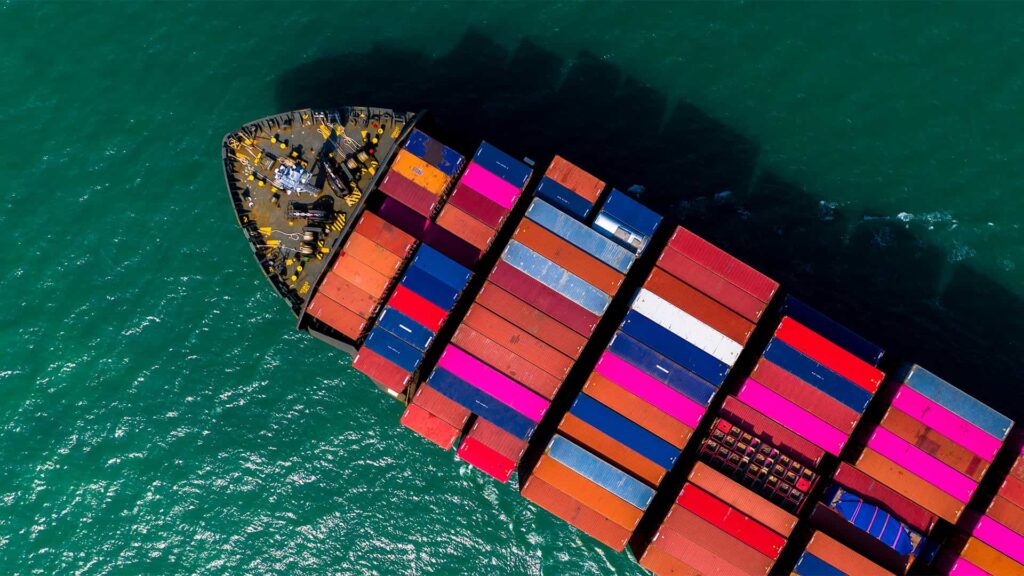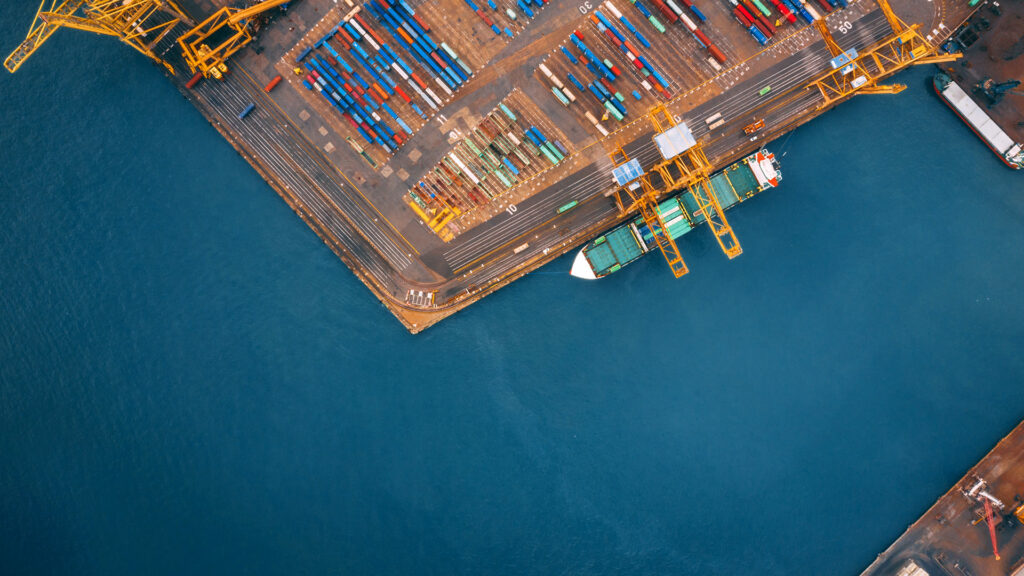Addressing EU inconsistencies
This article first appeared in the April 2013 issue of Port Strategy and is reproduced with their kind permission. www.portstrategy.com.
Europe’s ports have long served as the gateways to the transport market within Europe as well as to the rest of the world: its ports have created the base for European-wide infrastructure networks, providing benefits for many and relied upon by millions.
However, there is an apparent inconsistency across European ports, not only in the way they provide services, but also in the way they are established and developed.
A review of European Ports Policy conducted by the European Commission that has lasted several years and involved numerous consultations closed in January this year, and it is now anticipated that the publication of an updated European Ports Policy, in the form of a legislative proposal, will follow shortly.
In 2011 the Commission published a White Paper on Transport which stated as one of its main aims the establishment of a new framework for EU Ports Policy for achieving a competitive transport system by the 2020-2030 period. A review of ports policy followed, and on January 18, 2013 the Commission met with industry figures in Brussels to formally close the review process and discuss the responses to the consultations.
Missing link
Although no official statement has been published, it has been suggested that the existing framework set out in the Commission’s 2007 Communication on Ports Policy – which outlined certain actions to be carried out across the whole ports sector – needs to be overhauled for reasons including the absence of clear State aid guidelines for ports.
Despite the expectation that a new legislative proposal will follow in late Spring 2013, before the impact assessment is concluded, the Commission has explained that it is too early to say what aspects will be covered in the policy and in what form.
Results of several of the specific industry consultations were presented at a stakeholder meeting held in September 2012, at the European Ports Policy Review Conference in Brussels. The results of one of the surveys relating to quality and efficiency of EU ports displayed a positive outlook and expectation for growth in the ports sector from the majority of respondents.
It also highlighted, however, “clear disparities in performance”, including great variety in the efficiency of and competition within port services across Member States.
With talks concerning the creation of a super-alliance for trade between the EU and the USA imminent, a reinforced infrastructure within the EU is an increasingly pertinent issue and will continue to form the essential backbone to any bilateral trade and investment agreements made. It is therefore hoped that any policy published would move towards redressing these ‘disparities’.
Little information has been released relating to the new policy, although it has been strongly suggested that there will be a review of the legislation covering technical services, financial transparency and free access to the market, as declared by Matthias Ruete, director general of DG MOVE.
New chapter
The new policy has not been billed as a ‘third port package’ – a direct successor to the much-criticised Ports Packages I and II – but rather as an additional chapter to the ‘book’ on ports, as Mr Ruete has put it. However, any wide-ranging ports policy, covering economic, environmental and infrastructure regulation may see continued criticism. The question still remains whether such a policy can and should be applied.
David Whitehead, the director of the British Ports Association anticipates that the eventual policy will achieve a financial openness and transparency not before seen in the sector and expects that the BPA’s members will be supportive of such measures.
In particular, a set of State aid guidelines specific to the ports sector would be welcome. So far, such guidelines remain unpublished since it is appreciated that the funding models for ports across Europe are so different that homogenisation could be somewhat problematic.
In general terms, the granting of State aid to a port eliminates costs that would normally be borne by the port, and since the pricing strategy of a port is dependent on the way it is funded, such aid can consequently affect the pricing of particular port services and might lead to the distortion of competition. A homogenisation of rules across the industry could lead to the uprooting of ports that have developed and thrived by way of particular types of investment, because this might affect their pricing strategies.
However, if new port State aid policy is published in the form of guidelines (rather than binding legislation), it is hoped that they would result in the creation of a ‘level playing field’ which might address disparities in the funding models for ports across Member States.
Private vs public
This disparity in funding is best evidenced when comparing ports in the UK to those of mainland Europe. Indeed, unlike ports in the UK, which are predominantly privately-funded, mainland European ports are owned by public bodies, private undertakings or a combination of the two. The combination of these ownership models of mainland European ports also evidences the diversity and corresponding disparities that stretch across and exist between all European ports. In an industry where there are several models for infrastructure and port financing, it is important that stakeholders are aware of the directions of flows of public funds. Any new ports policy must be drafted with this context in mind.
There is a fine balance between too little and too much regulation, and a sweeping ports policy has the potential to tip this balance against parties in an established and comfortable position, currently benefitting from the situation.
Some fear that any new policy will create heavy regulation of service provision. Mr Ruete has talked of “drawing the line between public and private port-specific services”. However, this may be considered a strict definition of services which may be criticised by EU Member States and the port industry if implemented.
This, according to Mr Whitehead, is an unwelcome prospect for BPA’s members. He warns that blanket regulation of service provision in ports, something that has not been consistent and uniform in all EU Member States, puts certain ports at a risk of getting “caught in the cross-fire of legislation” that he considers Europe-centred policy often creates.
The process of implementation of any future ports policy in the EU Member States should also be considered. The policy will be implemented alongside other EU Regulations and international conventions, such as the International Labour Organisation’s Maritime Labour Convention. The timing for implementation together with the interplay between all such regulations and conventions must be correct.
This is especially important as their implementation could have a significant economic impact on certain sectors – for example the oft-cited SOx regulations (Directive 1999/32/EC, as amended), which impose strict restrictions on sulphur limits for marine fuels, are expected to have a huge financial impact on the ferries sector.
Balancing act
This emphasises another challenge for Commission regulators and those States implementing their regulations – striking the correct balance between regulation and practice, and applying regulations that are ‘catch-all while also remaining sufficiently broad to allow for regional particularities.
It is not only ports that compete among themselves, but whole European supply chains face competition from alternative routes. While not providing direct competition for ports, it is clear that a supply chain might easily be weakened by a struggling port, and vice versa: a strong port might reinforce a weaker supply chain, and encourage its development.
On a Europe-wide level, however, it is possible that wide-ranging legislation could assist in the levelling out of the development of European ports. Differences in performance across various European ports can disrupt the flow of goods as well as the organisation of supply chains, and new regulation could encourage further smooth-functioning of logistics networks.
As it waits with bated breath, it is these wider considerations, alongside more specific implications as discussed, that the industry hopes the Commission bears in mind while drafting any forthcoming policy.
As will be apparent, the EU Ports Policy is a dynamic issue, and it is possible that there may have been further developments since the time of writing.
For more information, please contact, Anthony Woolich, Partner, on +44 (0)20 7264 8033 or anthony.woolich@hfw.com, or Eliza Petritsi, Partner, on +44 (0)20 7264 8772/+32 2 643 3402 or eliza.petritsi@hfw.com, or your usual HFW contact.










